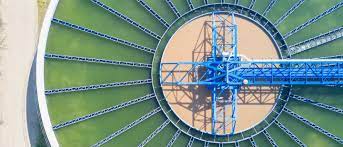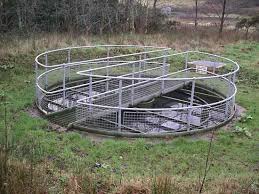As stated earlier in one of our previous articles, we have primary and secondary sedimentation in waste-water treatment. In the primary sedimentation stage, sewage flows through large tanks, commonly called “pre-settling basins”, “primary sedimentation tanks” or “primary clarifiers” (Huber Company, Berching, Germany, 2012).
The tanks are used to settle sludge while grease and oils rise to the surface and are skimmed off. Primary settling tanks are usually equipped with mechanically driven scrapers that continually drive the collected sludge towards a hopper in the base of the tank where it is pumped to sludge treatment facilities. Grease and oil from the floating material can sometimes be recovered for saponification.
This removes as much as possible the organic matter of sewage. The sewage is allowed to flow in a rectangular tank. Some of them have paddles which help to rotate the sewage and collect the heavy particles (solid organic matter, inorganic matters) together and make them to sink as sediment.
Read Also: Types and Sources of Waste-Water
Within the tank, it stays 2-8 hours. At the end of 2-8 hrs, this process removes about 60% of suspended solids and about 40% of Bio-chemical Oxygen Demand (BOD). According to Sridhar (2007), the rate of sedimentation is increased in some industrial waste treatment stations by incorporating processes called chemical coagulation and flocculation in the sedimentation tank.
Coagulation is the process of adding chemical such as aluminum sulfate, ferric chloride or polyelectrolyte to the waste-water; this causes the surface characteristics of the suspended solids to be altered so that they attach to one another and precipitate. Flocculation causes the suspended solids to coalesce.

These two processes can remove more than 80 percent suspended solids. The solid particles are directed to the sludge digester for treatment and the effluent to the next apartment called the activated sludge (surplus) or filtration/Aeration chamber
Final Sedimentation
This occurs during the secondary treatment of the waste-water. Here the still remaining solids settle on top while the effluent goes into a lake or river, sea or any other place while the surplus activated sludge should be collected and re-cycled starting from the primary sedimentation (rear side of it).
Read Also: Impacts of Waste-water on the Environment, Treatment objectives and Disposal Regulations
It should be directed to the sludge digester and have the action is anaerobic (no more aerobic). The sludge is pumped into digested anaerobic sludge, dewatered and tarry odour (innocuous). Gas could be produced (as fuels etc) while the effluent is discharged into the river. Dewatering means ―air drying.

